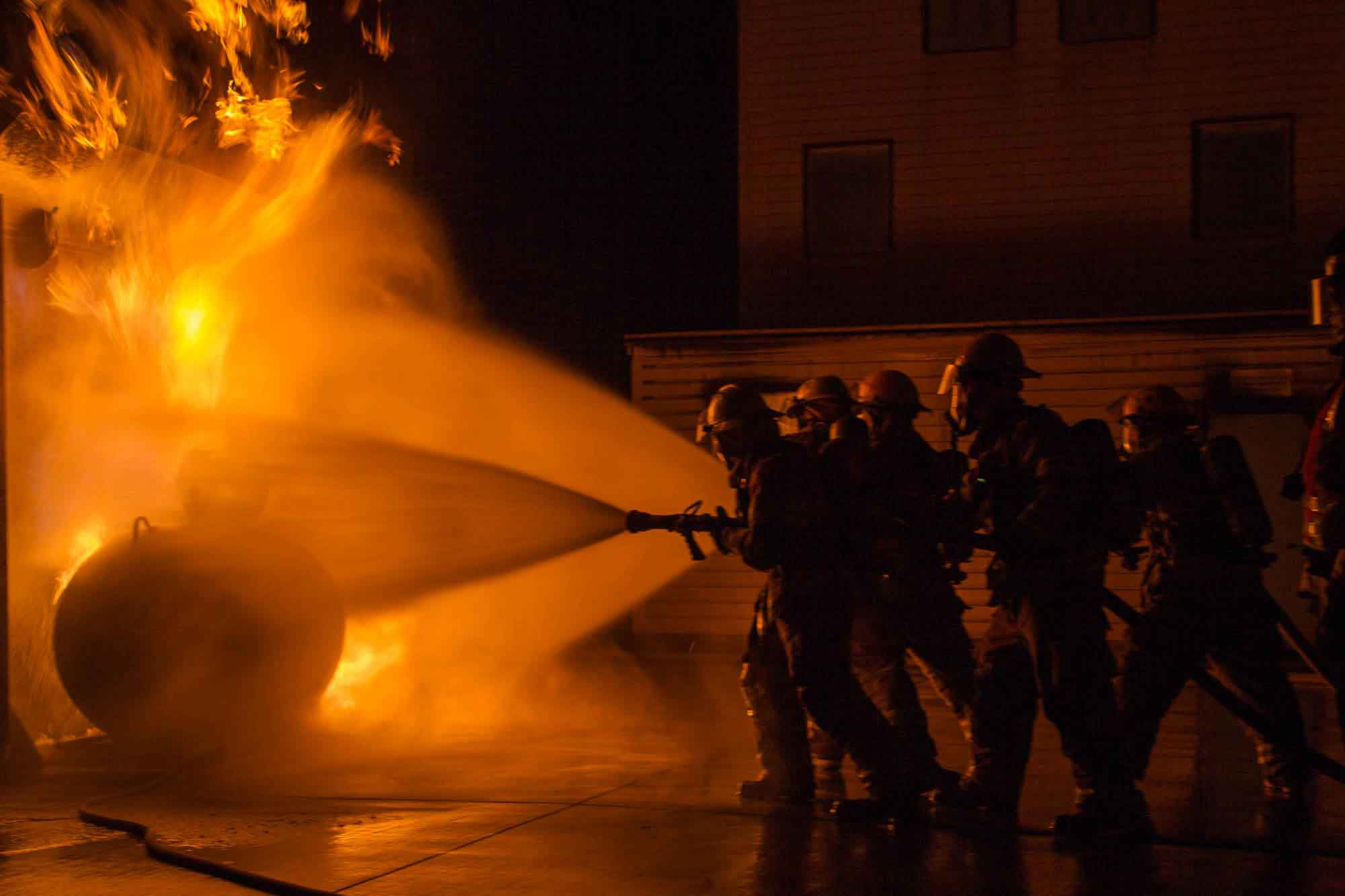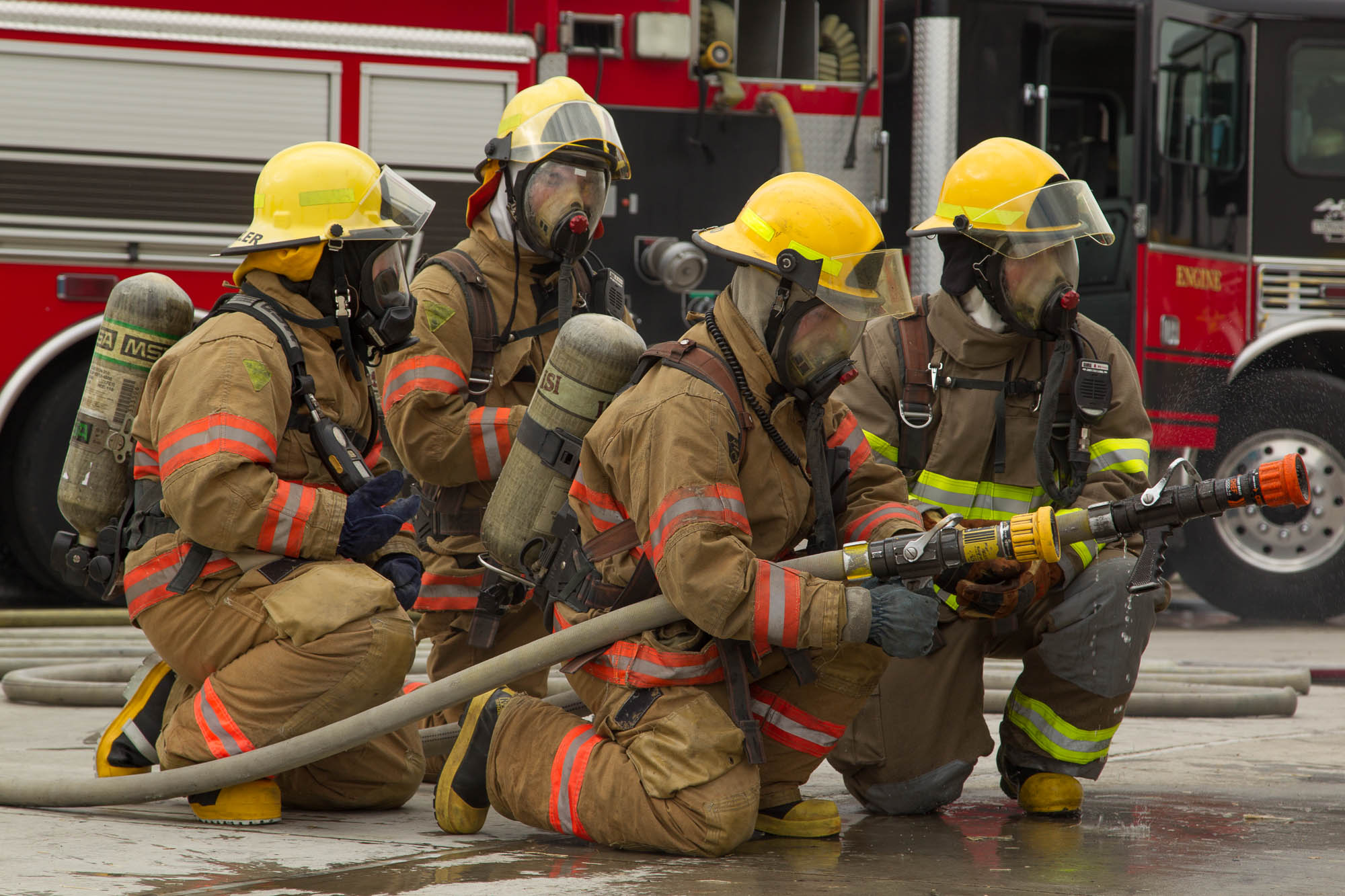Fire Suppression
Start on your path to becoming a firefighter with Chemeketa's two-year fire suppression degree.
topics Social Service
Skills & InterestWorking with your hands
CareersSocial Sciences
Why choose Fire Suppression?
Launch your career as a firefighter–EMT with real-world training and accredited programs.
Hands-on training
You will gain on-the-job experience by serving as Chemeketa student firefighters:
- During Fall, Winter, and Spring terms, on-duty for a 24-hour shift every sixth day, operating 24/7 while classes are in session
- Respond to real emergencies with partnering fire agencies in Marion, Polk, and Yamhill counties
- During Summer term, complete five weeks of Cooperative Work Experience (CWE) with partner fire agencies
Program pathways
- Fire Suppression AAS Degree – 2 years
- Firefighter–EMT Certificate – 9 months
- Fire Suppression + Paramedic – 3 years total with the Paramedic Bridge Certificate program (one additional year after Suppression)
Program highlights
- Classroom, lab, and live emergency response experience
- Special admission requirements and limited enrollment — call 503.399.5163 for details
Chemeketa's Fire programs are accredited through the International Fire Service Accreditation Congress (IFSAC).
What will you learn?
Based at Chemeketa’s Brooks Center—home to one of the most modern training facilities on the West Coast—you’ll develop the skills needed for a successful career in fire service. You will learn to:
- Apply safety practices during training and emergency response activities
- Communicate clearly in both emergency and non-emergency situations
- Identify hazards and educate the public on risk reduction
- Collaborate with a diverse team to meet organizational goals
- Participate in the daily operations of a fire station
What will you do?
Through a blend of classroom, lab, and hands-on learning, you will:
- Develop safe response practices for training and emergency situations
- Communicate effectively in verbal and written forms for all scenarios
- Identify hazards and lead public risk reduction efforts
- Collaborate with diverse colleagues and support daily fire station operations
- Acquire skills to function as an EMT Basic, Firefighter I, driver, and pumper operator
- Gain hands-on experience responding to emergencies during your 24-hour student firefighter shifts
Upon successful completion of the Firefighter–EMT Certificate Program, you will be eligible to test for:
- EMT Basic licensure
- DPSST certifications in:
- NFPA HazMat Awareness and Operations
- NFPA Fire Fighter I
- NFPA Fire Apparatus Driver/Operator
- NFPA Apparatus Equipped with Fire Pump
- Entry-level Wildland Fire Operations
Upon successful completion of the Associate of Applied Science Degree in Fire Suppression, you will receive all of the above certifications and licensure, plus the degree credential that prepares you for advanced career opportunities in the fire service and NFPA Fire Fighter II certification.
You’ll be fully prepared to start your career as a firefighter anywhere.
-
How To Apply
The Fire Suppression AAS Degree and Firefighter–EMT Certificate are limited-enrollment programs that share the same competitive admissions process. Students accepted into either program begin classes in the fall term only.
To be considered for admission, students must complete the following:
- Read the Fire Suppression Information Packet – Available under “Apply Now” on the website; contains full program details, important dates, and checklists
- Apply to Chemeketa Community College – Obtain your student ID number (“K” number)
- Attend a Fire Program Information Session – Strongly recommended for all applicants; covers program expectations, the FireTEAM test, resident volunteer opportunities, and an overview of the CPAT physical fitness test
- Take the FireTEAM Test
- Register for XFRP5001A – Summer term only – A non-credit course that supports students through the Fire Program application process
- Submit the Fire Program Application and required documents Participate in an Oral Board Interview – Evaluates communication, professionalism, and readiness
- Pass the CPAT Test – Candidate Physical Ability Test (pass/fail)
- Complete a Medical Examination (if selected) – Must meet NFPA firefighter medical standards
- Provide Proof of Required Immunizations (if selected) – Includes chickenpox, measles, mumps, rubella, tetanus, Hepatitis B (at least the first dose), and a negative TB test; COVID-19 vaccination requirements may vary
- Attend the Fire Program Orientation – Required for all accepted students.
Selections are based on the FireTEAM written examination, oral board interview, and CPAT testing (pass/fail). Due to the competitive nature of the program and the number of applicants, cuts may be made at each step of the process. Only those who successfully complete each step and continue to meet selection criteria will move forward.
Minimum Eligibility Requirements
- Age: Must be at least 18 years old by the first day of fall term
- Education: High school diploma or GED
- Chemeketa Admission: Must be accepted as a Chemeketa student
- Driver’s License: Valid license required; no more than two moving violations or chargeable accidents in the past three years; no alcohol- or drug-related moving violations in the past five years
- Criminal History: Some convictions may disqualify applicants; contact the Program Chair or Dean with questions
-
CRIMINAL BACKGROUND CHECK & DRUG TESTING
Upon entry into this program, you will be required to pass a criminal background check and pass a ten-panel drug screening urinalysis conducted by a college-approved vendor. If you do not pass the criminal background check and/or the drug screening, program registration will not be possible. If you are arrested during the time you are enrolled in the program, you must notify the Fire Program Chair of the arrest. Your status in the program will be reviewed by the Fire Program Chair and the Dean of Emergency Services. A possible outcome of the review may be that you are unable to continue in the program.
If you have questions regarding disqualifying crimes for DPSST certification visit the Oregon Fire Program's Background Check Information webpage.
For more information please email the program.

